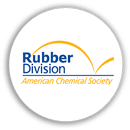ASTM D1603: Standard Test Method for Carbon Black Content in Olefin Plastics
ASTM D1603 primarily applies to polyethylene (PE) and polypropylene (PP) plastics, commonly used in pipes, cables, films, and automotive components. This test method determines the percentage of carbon black present in the plastic by high-temperature combustion and weight analysis.
The key objectives of ASTM D1603 include:
-
Ensuring Material Durability – Adequate carbon black levels improve weather resistance and longevity.
-
Quality Control – Helps manufacturers maintain consistent product formulations.
-
Regulatory Compliance – Ensures materials meet industry and environmental standards.
-
Performance Validation – Confirms that plastic materials contain sufficient carbon black for their intended applications.
Test Procedure
Sample Preparation
The test sample is typically cut from plastic sheets, pipes, or films. It must be clean and free of surface contaminants that could interfere with combustion.
High-Temperature Combustion
The sample is heated in a muffle furnace at 550–600°C under a controlled nitrogen atmosphere. This process burns off all organic components, leaving behind only carbon black and inorganic residues.
Carbon Black Content Measurement
The remaining residue is weighed to determine the total non-volatile content. If necessary, acid digestion is used to remove inorganic fillers, leaving only carbon black for final measurement. The percentage of carbon black is calculated based on the initial and final sample weights.
Data Interpretation
-
High carbon black content indicates better UV resistance and strength.
-
Low carbon black content suggests poor weather resistance and possible material degradation.
-
Inconsistent results may indicate contamination or processing variations in the plastic material.
Significance of ASTM D1603 in Plastic Manufacturing
-
Enhanced UV Protection – Carbon black absorbs UV radiation, preventing polymer degradation.
-
Mechanical Strength – Ensures materials have the right level of reinforcement for industrial applications.
-
Failure Prevention – Identifies materials with insufficient carbon black, which may lead to brittleness and cracking over time.
-
Compliance with Standards – Ensures that pipes, films, and electrical cables meet regulatory requirements for outdoor use.
Applications of ASTM D1603
Plastic Piping Industry
Ensures polyethylene and polypropylene pipes have sufficient carbon black to resist sunlight degradation. This is critical for municipal water supply, gas distribution, and industrial fluid transport systems.
Automotive Components
Evaluates polymer-based automotive parts, including bumpers, trims, and fuel tanks. Helps maintain structural integrity and UV protection in vehicle components exposed to sunlight.
Electrical and Cable Insulation
Confirms that plastic cable sheathing has the necessary carbon black levels to prevent weathering and cracking. This is essential for underground and outdoor power transmission cables.
Agricultural Films and Packaging
Ensures polyethylene greenhouse films can withstand prolonged sun exposure. It is commonly used in geomembranes, plastic tarps, and other protective coverings.
Advantages of ASTM D1603 Testing
-
Highly Accurate – Provides a precise measurement of carbon black content.
-
Non-Destructive for Bulk Materials – Requires only a small sample for testing, preserving bulk product integrity.
-
Essential for Product Certification – Helps manufacturers verify compliance with ASTM, ISO, and other industry standards.
-
Cost-Effective Quality Control – Reduces failure rates and material waste by ensuring correct formulation.
Challenges in Implementing ASTM D1603
-
Sample Preparation Sensitivity – Contaminants and processing residues can affect results.
-
High-Temperature Testing Requirements – Requires specialized muffle furnaces and controlled environments.
-
Potential for Residual Errors – Inorganic fillers must be completely removed to ensure accurate carbon black measurements.








